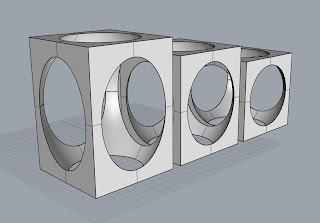I plan to continue the postings, and would appreciate any thoughts, reactions or assistance from like-minded explorers.
Results of the test bar firings:
POWDER TYPE
|
RATIO *
|
LENGTH mm **
|
SHRINKAGE
|
950°C
|
|||
Red Clay***
|
1:1:2
|
Turned to 'foam'
|
|
1:1:3
|
90
|
10%
|
|
1:1:4
|
91
|
9%
|
|
Potclays****
|
1:1:2
|
± 84
|
16%
|
1:1:3
|
86
|
14%
|
|
1:1:4
|
89
|
11%
|
|
1000°C
|
|||
Red Clay
|
1:1:2
|
Turned to 'foam'
|
|
1:1:3
|
90
|
10%
|
|
1:1:4
|
91
|
9%
|
|
Potclays
|
1:1:2
|
± 84
|
16%
|
1:1:3
|
86
|
14%
|
|
1:1:4
|
88
|
12%
|
|
1050°C
|
|||
Red Clay
|
1:1:2
|
Turned to 'foam'
|
|
1:1:3
|
These tests were dipped in vitreous slip,
fired to 1000°C, then glazed and fired to 1085°C
|
||
1:1:4
|
|||
Potclays
|
1:1:2
|
||
1:1:3
|
|||
1:1:4
|
|||
11000°C
|
|||
Red Clay
|
1:1:2
|
Turned to 'foam'
|
|
1:1:3
|
88
|
12%
|
|
1:1:4
|
90
|
10%
|
|
Potclays
|
1:1:2
|
± 82
|
18%
|
1:1:3
|
83
|
17%
|
|
1:1:4
|
85
|
15%
|
|
1085°C GLAZE
|
|||
Red Clay
|
1:1:2
|
N/A
|
|
1:1:3
|
89
|
11%
|
|
1:1:4
|
91
|
9%
|
|
Potclays
|
1:1:2
|
83
|
17%
|
1:1:3
|
85
|
15%
|
|
1:1:4
|
86
|
14%
|
|
* REFERS TO MIX OF
SUGAR, MALTODEXTRIN AND CERAMIC POWDER, i.e 1:1:4 =1 part sugar, 1 part
maltodextrin, 4 parts ceramic powder.
** Refers to the
recessed 100mm line in the test bars measured after firing.
*** Pure red clay
supplied by KHIO
**** Potclays
ceramic powder mix, contains flux, supplied by Michael Eden (MIRIAD)
The Prtlnd Vase is still in the kiln, hopefully I will be able to unpack it before I leave here this evening... I'll let you know.
A second vase was printed yesterday and is still in the powder...
The Prtlnd Vase is still in the kiln, hopefully I will be able to unpack it before I leave here this evening... I'll let you know.
A second vase was printed yesterday and is still in the powder...

































